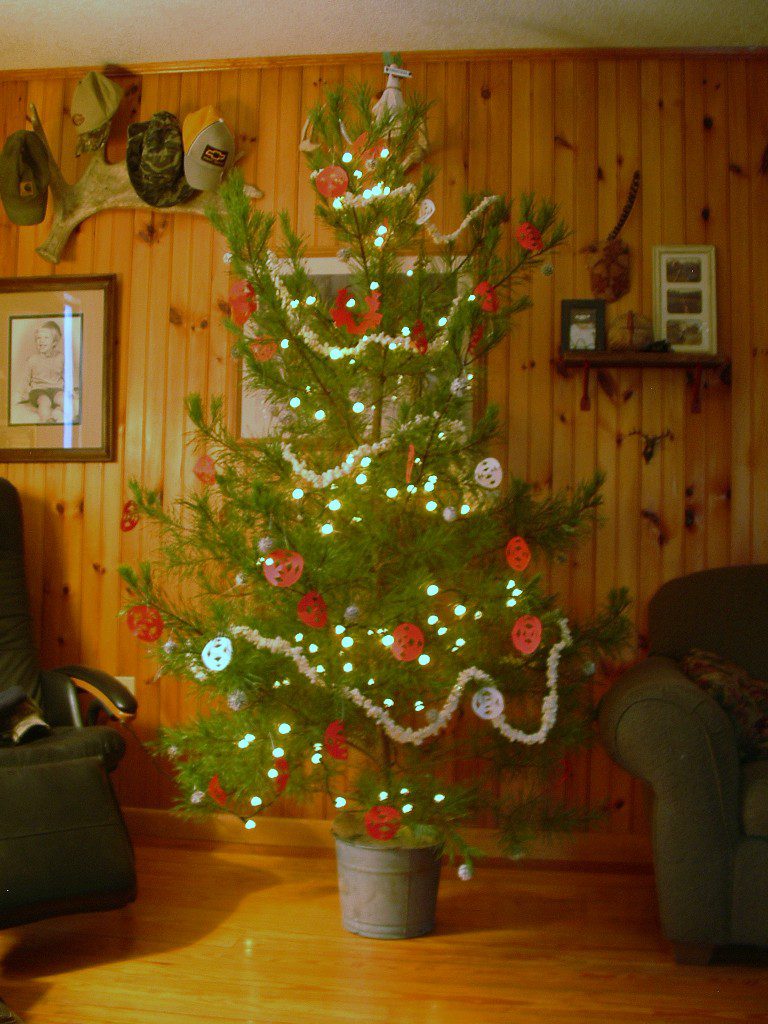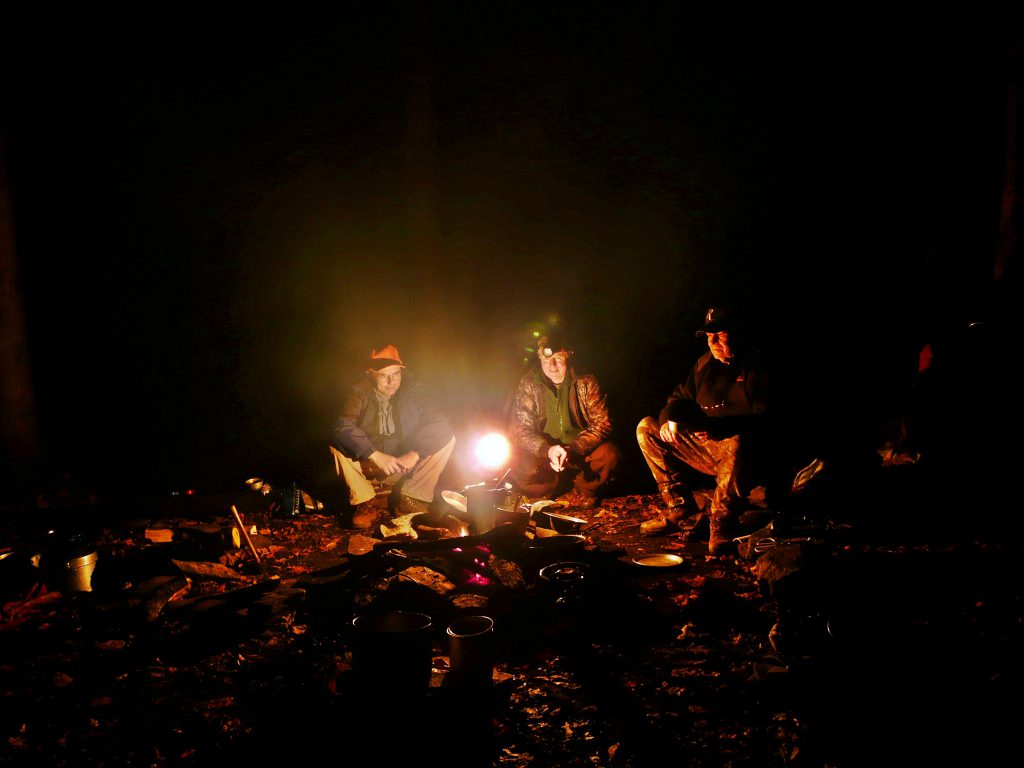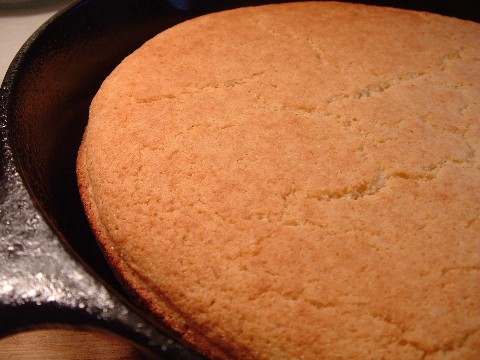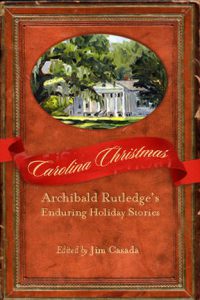MEMORABLE CHRISTMAS GIFTS

A goodly portion of what follows is an outgrowth of recent columns that I wrote for my hometown newspaper, The Smoky Mountain Times (in Bryson City, NC). I’ve done the column weekly for the last decade and a half or so, and its general title, “Mountain Musings and Memories,” pretty well reflects the contents. Before turning to memorable gifts from my days of a Bryson City boyhood, however, I want to mention a few adult gifts which hold a special place in my thoughts. The first one came from my wife, and it was rare in that I was totally surprised and truly delighted. I long ago reached the point in life where I either buy what I want when the “need” hits me or else can’t afford it. For example, when my daughter asked me what I wanted for Christmas this year, initially all I could think of was a type of hunting socks called “Heat Holders” which I really like. But the gift Ann got me really stands out. It was a Remington Model 710 in .243 caliber. She had considerable help from a friend who worked in public relations with Remington, but it was one of the few times she not only surprised me but gave me an item which truly meant a great deal to me. I evidently said something, in an unguarded moment, about the fact that my holding of rifles didn’t include one in .243 caliber. That caliber is dandy for South Carolina deer—flat-shooting if you are hunting power lines or bean fields and packing ample wallop to deal with our whitetails. Come Christmas morning I got a great surprise. Ann had managed, with plenty of cooperation and expert guidance from Linda Powell, who at that point handled public relations for Remington, to get me a Model 710 in the desired caliber. It was a stroke of genius on her part.
Throughout my much of my boyhood and indeed on into adulthood some gifts were predictable, since each December 25 would see me as a repeat recipient of these most welcome items.
*From the time I owned my first shotgun (a Christmas gift—see details below) there would always be a full box of 25 shotgun shells beneath the tree. This would be the only time during the entire year I would have that many.
In those days, a testament to the fact that laying out enough money to buy an entire box of shells, usually an amount just under two dollars, was a major expenditure for someone of limited means. That description certainly fit yours truly, so whenever I ran low on ammo it was time to head to Doc Woody’s sporting goods store to resupply with a portion of a box of shells. At that time you could buy shells individually at eight cents each or a baker’s dozen for a dollar. That suited my budget better than the purchase of an entire box.
*Another regular gift was some item of Duxbak attire. It might be a new pair of pants. Tough as the material was, constant exposure to blackberry briars, dewberry briars, and sawbriars took and inevitable toll. Momma would do stellar patch work to the pant bottoms with pieces of Duxbak fabric taken from worn-out or outgrown attire, but even her sewing magic could only go so far. Other Duxbak gear included hats, vests, and a couple of times, coats.
*Yet another recurrent item was hunting socks. As I’m writing this I’m wearing a pair of this type of socks known as “Heat Holders,” and they live up to the name. In those days, however, there was nothing special about hunting socks other than extra thickness and the fact they extended far enough up one’s legs to clear boot tops. I covered enough ground, between hunting and fishing outings and just plundering about, to wear out several pairs every year.
*Almost always there was a pocket knife or similar item such as a fixed-blade sheath knife or a hatchet in my stocking or under the tree. Those were a product of a singularly sad experience from my Dad’s boyhood when he was bitterly disappointed thanks to getting a piece of hard candy in the shape of a pocket knife rather than the real thing. His reaction to that hurtful moment was to make a point, throughout his life, of seeing that first his sons and later his grandsons, always received pocket knives.
ONE-TIME GIFTS WITH A LASTING IMPACT
All of these recurrent gifts were welcome and put to good use, but it is select one-time items which I remember with the most fondness. They included:
*A copy of Zane Grey’s Spirit of the Border, the first book I ever received, and a few years later a first edition of Horace Kephart’s Our Southern Highlanders Mom had found and had rebound. Momma appreciated the fact I was an avid reader and did her best to cultivate what would become a lifelong passion for books.
*A Daisy Red Ryder BB gun along with a couple of packets of copper BBs. There were some foolish side effects to this gift, most notably my decision to use a small accumulation of silver dollars I had as targets. Of course the first time a pellet struck one of the coins it immediately reduced its collectible value by an appreciable degree.
*My first real gun, a 20 gauge single-shot Steven Model 220A. I still have it and the gun remains perfectly functional although it shows scratches all over the stock which attest to countless days afield after rabbits. The gun’s bluing is completely gone, and thanks to being tightly choked as a miser’s purse it was never ideal for much of what I hunted (squirrels being a notable exception).
*A matted and framed photograph of a painting of Archibald Rutledge which is signed by the great sporting scribe and longtime South Carolina Poet Laureate.
TOTALLY UNEXPECTED GIFTS
Three other memorable gifts, one of them received just a couple of weeks back, came from readers of this newsletter. In each case they were outgrowths of some comment I had made or a wistful, longing look backward into the past. I won’t mention names because of the potential to embarrass good-hearted souls, but rest assured in each instance these acts of thoughtfulness touched me in a most meaningful way.
*Chocolate-covered cherries. At some point I mentioned, in a December newsletter, that one of the things I remembered from youthful days when we drew names in school classes was that a fair number of the gifts would end up being chocolate-covered cherries. That was, in particular, the gift of choice for a lot of really impoverished students (and that description would have probably applied to 20 to 25 percent of my classmates in any given year) was chocolate-covered cherries. A box was inexpensive and I’ve often wondered whether maybe teachers just laid in a supply in case some unfortunate student’s family couldn’t afford anything. Whatever the case, I loved those incredibly rich concoctions of a cherry, a bit of liqueur-like juice, the white candy surrounding it, and the chocolate outer shell.
I mentioned I hadn’t seen the delicacy in years, and a reader made a special trip to the National Wild Turkey Federation Convention (although he lived in Tennessee it was a good distance from the Nashville site for the event) and hand-delivered me a couple of boxes of the treat I remembered so well. It was, for me, a truly special gesture.
*A bubble light. Another Yuletide reminiscence involved my warm memories of a string of what we always called “bubble lights” which decorated the family tree for many years. They were cylinders of glass, shaped like a candle, and when you plugged them in they lit up and the liquid inside constantly bubbled. I may have mentioned the decorations in a newsletter but the person who reacted read my comments on them in a newspaper column.
Her gift came as a total, and indeed almost sneaky, surprise. The lady knew I was keenly interested in a writer from yesteryear of some renown, Olive Tilford Dargan. Among a number of books Dargan wrote was From My Highest Hill, an account of a farm she owned in Swain County and her interaction with the folks living in the area. This person had, through her family, connections to Dargan, a photograph of her, and other memorabilia. She invited me to visit her the next time I was in the mountains and of course I did just that.
When I arrived we exchanged pleasantries and then, before getting to the matter at hand, she said: “I’ve got something I want you to have.” She then gave me a little box. When I opened it I found a single bubble light, reworked so it had its own plug and could go into an outlet much like a night light. It worked and bubbled with a brightness which immediately took me back to a world I thought I had forever lost.
*A sampling of soothing syrup. Much more recently, in fact just a couple of weeks back, a lady showed up to acquire a copy of The Greatest Deer Hunting Book Ever for her husband. When she arrived I immediately realized who she was and remembered that in previous visits her husband, whose father had been head of campus security at Winthrop University during a portion of my years there, had accompanied her.
No sooner did she get in the door, however, than she said: “Oh, I forgot something in the car,” and then she rushed back out. When she returned she had a plastic bag in hand and as she placed it on the kitchen counter (like many country folks we’ve always come into the house through the kitchen door, not the front door) there was a sound which left no doubt it was glass. I assumed it was maybe a jar of molasses, a quart of honey, or perhaps home canning of some sort. Only after I had inscribed the book and taken care of that did realization dawn that she wanted me to open the bag.
I did so and to my pure delight it was a bottle of Woodford Reserve bourbon. Now I’m not a regular drinker by any means, but after a particularly tough day, when in the company of good friends, or on special occasions a wee dram or two suits me to a “T.” As I viewed the bottle a whole bunch of memories came back. I recalled discussing brands of bourbon and its taste with the lady’s husband and remembered that he was truly knowledgeable on the subject, a genuine bourbon guru. We had agreed that Woodford Reserve was not only exceptionally palatable but one of the best bargains in the field as well. He had retained that knowledge and gave me a bottle which, according to his wife, was in recognition of my efforts as a writer and the fact he enjoyed my efforts as a wordsmith.
Mind you, as a friend subsequently said, this account of liquid “nourishment” provides a link to the likes of Ruark, Hemingway, and Faulkner. I’ll simply demur on two fronts. First, I never, ever want to crawl down the avenues of alcohol dependence/addiction the way that trio did. Second, I readily recognize I’ll never have so much as a scintilla of their literary skill. By the same token though, I’d like to think mine is a far more stable if far less creative life.
***********************************************************************************
MY EVOLUTION AS A WRITER
Thanks in part to sheer oversight and in part to wanting to cover seasonal topics, the two preceding installments of this newsletter abandoned my ongoing autobiographical coverage of my work as a communicator. With this edition let’s get back on track, and I’m also resuming the humor section known as “Family Funnies.”
In many ways, the years following my early retirement from the professing business (I was 54 at the time but had the 25 years of service required to qualify for state retirement benefits although they would not kick in until I turned 55) were golden ones not only for me personally but for in the world of outdoor communications. Mind you, the real “golden age” of outdoor writing had come and gone. It fell in the two decades or so following the end of World War II, a time when giants among sporting scribes—Havilah Babcock, Archibald Rutledge, Nash Buckingham, Ted Trueblood, Robert Ruark, Gordon MacQuarrie, Jack O’Connor, Elmer Keith, and others—were in their prime. Many of them (though by no means all—to my knowledge neither Babcock nor Rutledge ever went on a “comp” trip or enjoyed lavish hunting opportunities thanks to industry sponsorship) lived large through all expenses paid trips across the world, lavish seminars where they were given new guns and treated like royalty, and in general were able to enjoy an envious lifestyle.
Those days of elaborate jaunts where a plane filled with sporting scribes took off for some remote, exotic location were no more by the 1990s, but the fact remains I was privileged to be a participant in a number of sponsored trips. They included hunting in New Zealand and Austria, hunting and fishing in Alaska, multiple adventures in Mexico, visits to most if not all the Canadian provinces, and hunts (mostly for turkey) in dozens of U. S. states.
Next month we’ll pick up with some reminiscences on great trips; interesting folks with whom I’ve shared hunting camps, a boat, or a trout stream; highlights (and a low light or two) of a writing life now stretching over a bunch of decades; and maybe a warm, winsome note or two on how family figured in the writing life. Speaking of family, it’s time to resume excursions into humorous situations which have spiced my life. In that regard, I’d simply say, and it’s something I need to remind myself of now more than ever before, when you stop laughing you have, in no small way, stopped living.
FAMILY FUNNIES—EPISODE 3
TO BUILD A FIRE

One of my all-time favorite short stories is Jack London’s “To Build a Fire.” If you haven’t read it I recommend the piece, and a lot of other London material, and if you enjoy the short story genre you might also want to sample offerings from some other favorites of mine—Vereen Bell (dog stories), John Taintor Foote (various hunting and fishing tales), Edgar Allen Poe (mysteries and horror), Ron Rash (material set in the Carolinas), and O. Henry (the pen name of William Sidney Porter—tales of the human condition, almost always with a twist).
Unless you have exceptional woodsman’s skills, a basic necessity for starting a fire is matches, a lighter, or some other type of flame-producing device. Lack of any of those underlies this tale, which wasn’t particularly funny to me at the time but I’ll have to admit it produced a world of mirth in my family. Indeed, to some degree, it continues to do so.
The background to my moment of no fire misery involved donation of a backcountry camping trip/fly fishing expedition to a Trout Unlimited chapter. This was something I did on a fairly regular basis for a number of years, and invariably the folks who bought the trip were fun to be around and keenly interested in the overall experience.
On this particular occasion the two participants were fit and up to a hike of several miles, so I decided on camping at a backcountry location on my home waters of Deep Creek in the Great Smoky Mountains National Park. We reached the campsite by mid-afternoon, set up camp, and then fished until dusk. I don’t remember the details of our fishing but I do know we had enough trout to make them the focal point of supper. All was well until I got ready to start a fire.
I looked, in vain, for matches. I was absolutely sure I had them but after some surreptitious scrambling produced nothing in the way of fire-starting material, I rather sheepishly asked my guests if they had matches or a lighter. Alas, neither did, and there was really only one option. I needed to hike out to my vehicle at the trailhead, drive somewhere to get some matches, and then hike back to camp. Had I taken time to ponder the matter, I would have driven into Bryson City, gone to the store, bought a couple of lighters, and headed back to the campsite.
Instead, I made the mistake of driving to my parents’ home and revealing my dilemma. Dad immediately started chuckling, and my wife, who was staying with Mom and Dad, had a smirk on her face that seemed to be permanently implanted. I ignored them as much as possible and made haste to get back to the campsite. It was close to midnight when I arrived (I had hiked better than nine miles, not to mention the ground covered while fishing). By the time I finally cooked supper, cleaned the dishes, and tumbled into my sleeping bag in was past 1:00 a.m. Needless to say I was dog tired.
The rest of the weekend went well. The guys caught a good many trout, I would like to think that the campfire meals I cooked were quite palatable, and late Sunday we made our way out of the backcountry in good spirits. I bid them farewell at the trailhead and then began the short drive to my parents’ house, knowing as I did so that I was going to get a ration of grief and teasing which would be hard to bear.
Sure enough, when I arrived and walked to the porch visible evidence of what awaited me greeted my eyes. The screen door and the entrance to the kitchen were absolutely festooned with matches. There were strings holding boxes of matches, match packs of the flip-open or folder type hanging everywhere, and in general enough fire-related material to constitute a pyromaniac’s dream of nirvana. I entered the house to gales of laughter, and snide remarks from one and all about how the mighty backwoodsman and noted angler didn’t even have the means of starting a fire to cook his fish.
I couldn’t do much except endure the misery, because every bit of the torture was deserved. But in due course temporary discombobulation took on a more permanent face. A week later, while sorting through my camping gear and storing it until the next trip, I discovered, tucked away in a little packet of cooking utensils I always carried, a whole bunch of waterproof matches. I had had the means of starting a fire all along! There was a final chapter to this fire-building saga yet to be written, but it had to wait until the annual family Christmas gathering that December. We’ll look at that further venture into embarrassment in the next newsletter.
********************************************************************************
RECIPES FOR CABIN FEVER TIME
CHUNKY VENISON SPAGHETTI
1 to 2 pounds of cubed venison steak
Canned or frozen tomatoes (I freeze whole tommytoes or sections of regular tomatoes and put a couple of containers in this recipe)
1 can tomato sauce
Italian seasoning to taste
1 container of spaghetti sauce (I like Prego)
Black pepper, red pepper flakes, salt to taste
Coat the cubed steaks with flour and brown quickly in a skillet containing olive oil. Once browned set the cubed steaks aside. In a large soup or stew pot, place tomatoes, tomato sauce, Prego sauce and seasonings and bring to a simmer. Add venison steaks and allow to simmer for an hour or two. When the meat and sauce reach a suitable thickness, prepare pasta. While the pasta cooks, use a wooden spoon to separate the cubed steaks into small chunks (they will be so tender they virtually fall apart). Pour sauce over spaghetti noodles and serve piping hot, topped with grated cheese if desired. A chunk of garlic bread and a green salad will make this a hearty, tasty meal.
WINTER FARE FROM THE GARDEN

A frequent supper from my boyhood would be cornbread, turnip greens, pinto or October beans, and maybe some fried streaked meat. I’ve covered cornbread multiple times over the years, but this time let’s turn to turnip greens. For my taste, there are three conditions of considerable importance when it comes to cooking turnip greens. (1) They need to simmer a long time in order to reach maximum tenderness and produce the finest pot liquor. (2) A couple of slices of streaked meat (salt pork, streak of lean, side meat and other names are also used to describe this portion of pork). (3) Turnips, cooked separately after having been chopped into small bits. These should be introduced to the greens just prior to serving.
This is food fit for a king, and sopping up the pot liquor which is left with a piece of cornbread is pure country boy culinary heaven (and you are getting all the good vitamins cooked out into the juice).
SYLLABUB

This recipe, along with the two following it, comes from one of five anthologies of the writings of Archibald Rutledge I have edited and compiled, Carolina Christmas (To order a copy of the book, which includes 33 Rutledge selections with holiday themes, a cookery section and its more than three dozen seasonal recipes, and my editorial thoughts and comments, visit my website at www.jimcasadaoutdoors.com. The handsome hardbound book is $29.95 plus $5 shipping and handling). Rutledge wrote, and wrote wonderfully well, on food. Some of his descriptions could kick your salivary glands into involuntary overdrive, and for my money that’s powerful prose. Alas, for all the traditional dishes and Hampton Plantation feasts he described, he left us almost no recipes. When I was bemoaning that fact while working on Carolina Christmas, my dear wife, Ann, came up with a practical and perfect solution. “We can provide the recipes,” she said, “because he wrote about foods we eat and love.” I jumped at the opportunity, although with a couple of exceptions the truth of the matter was that there was little of “we can provide the recipes” and a lot of she provided them.
To a quart of cream add a half pint of sweet wine in which the peel of the lemons used for juice has been steeped and a half pin of Madeira. Then add the juice of two lemons, a bit of finely powdered allspice, and sugar to taste. Whisk all the ingredients together, stirring vigorously until froth rises. Skim away the froth and continue whisking. The froth is placed in glasses partly filled with the liquid. The result is syllabub.
OYSTER STEW
1 pint shucked oysters
3 tablespoons butter (the real thing)
1 quart whole milk
Salt and pepper to taste
Heat oysters slowly in their own juice until the edges begin to curl. Season with salt and pepper. Add butter. Combine with scalded milk and serve with crackers. Note: If you worry about overdoing it with heat while scalding milk, a double boiler approach is an option.
WILD DUCK AND MUSHROOMS
1 mallard or 2 wood ducks
1 cup fresh mushrooms, sliced
1 onion, sliced
2 tablespoons flour
Salt and pepper to taste
¼ teaspoon thyme
2 cups water
1 bay leaf
½ cup butter or drippings
Clean and disjoint duck, then brown with onion and fat. Add salt and pepper with two cups of water and a bay leaf. Cook slowly for 90 minutes. Sauté mushrooms, then add flour and thyme. Add to duck and cook another 30 minutes. Serve flanked by wild rice and venison sausage.